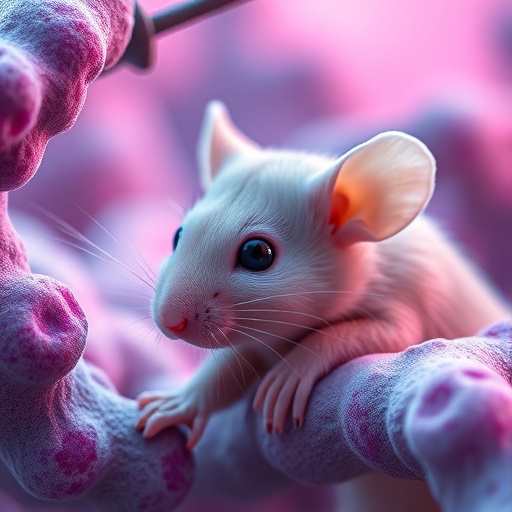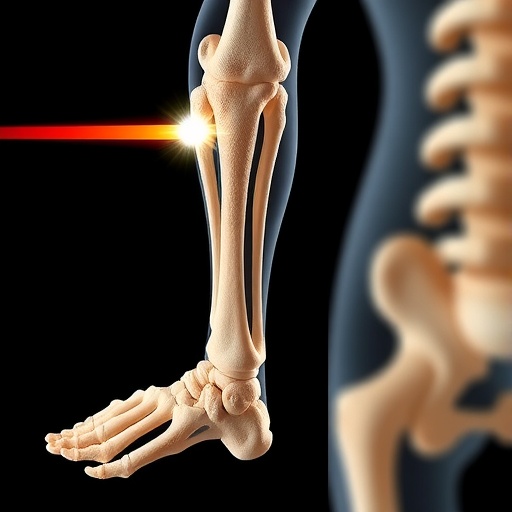In a groundbreaking study published in BMC Pharmacology and Toxicology, researchers from China have uncovered alarming insights regarding the long-term administration of hydrocortisone, a glucocorticoid commonly used to treat various inflammatory and autoimmune conditions. The research specifically examines the impact of chronic hydrocortisone exposure on the testicular tissue of juvenile mice, revealing significant findings that could have far-reaching implications for pediatric medicine.
Hydrocortisone, well-known for its anti-inflammatory properties, is often prescribed to manage conditions such as asthma, allergic reactions, and certain autoimmune diseases. While it serves a critical role in alleviating acute symptoms, the implications of long-term use, particularly in children, have been less well-characterized. This study aims to bridge that gap, focusing on the potential ramifications on reproductive health.
Through their rigorous experimental design, the authors observed that juvenile mice subjected to extended hydrocortisone treatment exhibited noteworthy biochemical changes. The researchers measured cytokine levels in the mice, which are proteins involved in the body’s immune response. Elevated levels of inflammatory cytokines have been associated with various pathological conditions, including reproductive impairment. The study highlights a concerning trend: long-term hydrocortisone administration appears to down-regulate these cytokine levels, which, paradoxically, could suggest a dysfunctional immune response that compromises testicular health.
One of the most striking aspects of this research is its focus on the histopathological changes in testicular tissue. Microscopic examination revealed cellular degeneration and impairments in spermatogenesis—key processes in male reproductive health. Such findings raise important questions about the safety and viability of glucocorticoid therapies in juvenile populations. The implications extend beyond mere inflammatory responses, suggesting the potential for long-lasting effects on fertility and reproductive development.
The authors also delved into the underlying mechanisms by which hydrocortisone may exert its detrimental effects on testicular tissue. By modulating hormonal pathways and hindering growth factors, hydrocortisone may lead to a cascade of physiological disruptions. This research offers a compelling narrative that links immune regulation, hormonal imbalance, and tissue development, challenging current perceptions of glucocorticoid therapy’s safety profile.
Interestingly, juvenile animals are often used in pharmacological studies to ascertain the effects of drugs, as their developing systems can mirror human pediatric health concerns. This study leverages that approach, providing an essential understanding of the implications hydrocortisone may have on a vulnerable population. Recognizing that testicular function is crucial not only for fertility but also for the overall endocrine balance throughout life emphasizes the importance of such findings.
Ultimately, this investigation calls for a critical evaluation of glucocorticoid therapies in children. While the need for effective treatment options for inflammatory conditions is unquestionable, the potential long-term consequences of glucocorticoid exposure necessitate a cautious approach. Clinicians and researchers alike must weigh the short-term benefits of hydrocortisone against the risk of potential long-term reproductive harm.
Furthermore, the findings highlight the necessity for ongoing research to explore alternative therapies that may mitigate inflammation without compromising reproductive health. Considering the growing prevalence of autoimmune and inflammatory conditions in pediatric patients, developing safer treatment paradigms is critical.
In conclusion, the adverse effects of long-term hydrocortisone administration on juvenile testicular health present a pressing concern for pediatric healthcare providers. This study sheds light on a previously underexplored area, offering a vital perspective that underscores the importance of reevaluating glucocorticoid therapies in children. As the medical community moves forward, integrating these findings into clinical practice could lead to more informed decision-making that prioritizes both immediate health and long-term well-being.
As we navigate this complex landscape of pediatric pharmacology, the study serves as a poignant reminder of the delicate balance between effective treatment and the preservation of developmental health. The implications of this research will undoubtedly resonate within the fields of pharmacology, toxicology, and reproductive health for years to come, shaping the future of pediatric care with a focus on holistic patient outcomes.
At the heart of these revelations lies a clear call to action for further studies aimed at understanding not only the risks associated with current treatment options but also exploring innovative alternatives that align with the evolving landscape of pediatric medicine. This research underscores the broader implications of pharmacological interventions, reminding us that every treatment carries the weight of responsibility—not just to alleviate symptoms but to safeguard the future.
As the discourse surrounding pediatric medication continues to evolve, this study stands as a crucial contribution to the conversation, urging healthcare practitioners to consider the long-term ramifications of treatments that may seem beneficial in the short term but carry significant risks for the developing reproductive system of young patients. Advocating for safe, effective, and mindful medical practices will be essential in navigating the complexities of treating juvenile populations with existing medical conditions while safeguarding their future health.
The journey towards finding optimal treatment solutions requires persistent inquiry and collaboration among researchers, healthcare providers, and policymakers. By fostering a multidisciplinary approach, we can better understand and address the challenges posed by chronic treatments, ultimately ensuring that the next generation has access to therapies that prioritize both efficacy and safety.
In revisiting the implications of hydrocortisone therapy for juvenile mice, the study serves not only as a warning but as a guiding light for future research endeavors and clinical practices designed to protect our most vulnerable patients while effectively managing their health conditions.
Subject of Research: Long-term effects of hydrocortisone on juvenile mice reproductive health.
Article Title: Long-term administration of hydrocortisone: down-regulating the level of cytokine and resulting in injuring testicular tissue of juvenile mice.
Article References:
Zhang, X., Zhou, J., Yang, Y. et al. Long-term administration of hydrocortisone: down-regulating the level of cytokine and resulting in injuring testicular tissue of juvenile mice. BMC Pharmacol Toxicol 26, 158 (2025). https://doi.org/10.1186/s40360-025-01000-3
Image Credits: AI Generated
DOI: 10.1186/s40360-025-01000-3
Keywords: hydrocortisone, juvenile mice, reproductive health, cytokines, pharmacology.
Tags: anti-inflammatory medication in youthBMC Pharmacology and Toxicology studychronic hydrocortisone exposure riskscytokine levels in testicular tissueglucocorticoid use in childrenhydrocortisone long-term effectshydrocortisone treatment side effectsimmune response and testicular healthinflammatory cytokines and reproductionjuvenile mouse testes healthpediatric medicine and inflammationreproductive health implications





